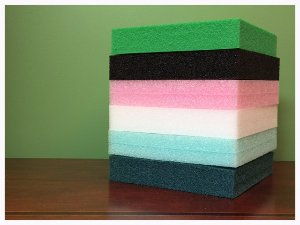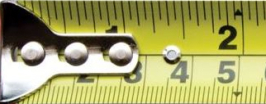
Polyethylene Foam
PE foam was invented during World War II. Its original application was for floatation devices for the military. Shortly after it was invented it became obvious to the military that PE was also an excellent packaging material. Most PE manufacturer's produce their material to meet military standards. This is why the PE industry is consistent. Everyone produces similar materials that are sized the same
There are three types of PE foam families that Technifoam deals with: Extruded Polyethylene, Expanded Polyethylene, and Crosslink Polyethylene.
There are many advantages to using each type of PE foam.. To learn more click on the tabs to the left!
Applications
Packaging Foam
Polyethylene foam is generally a medium weight to a high density material that provides exellent protection for products that normally have average fragility, to low fragility rates. With the right design it can also protect lighter and more fragile products.
PE foam will stop a product quickly without a lot of space to accomplish it. If you're limited on space and you need to fit a product in a smaller box, PE foam may be the solution if your product is not too fragile.
PE absorbs shock and compresses at a slower rate to prevent your product from coming to an abrupt stop in a shorter distance. This material allows you to use less foam in more strategic places to protect yourr product in less space.
When this material is compressed and then released, it returns back to its original form. So if a product is shipped and it has several opportunities to be dropped, you may want to consider using PE foam due to its durability and superior resiliency.
Floatation Foam
Everyone is familiar with the swimming noodle and how well it floats. There are thousands of other floating devices and toys that are manufactured from this material such as life savers and ski belts. Floatation is also a very valuable quality that is advantageous in packaging. If a packaged product is going to be around water, it would be best if that product could not sink. There are numerous other applications for PE floatation and once you start looking you will see it everywhere.
Insulation & Construction Foam
Polyethylene foam has excellent insulating qualities as well. Its flexibility allows for it to bend and insulate at the same time. Straight or flexible pipe insulation is a great example of PE insulating a product. The possibilities with PE are endless. For example, PE can be sewed to cloth material to create flexible coolers. PE can also be used to insulate an area that is exposed to solvents and other petroleum products. The material can also protect your product from damage while insulating it from undesirable temperatures. These are just a few of many insulating possibilities that PE foam can be used for.
Would you like us to quote an PE project? Request a Quote!





